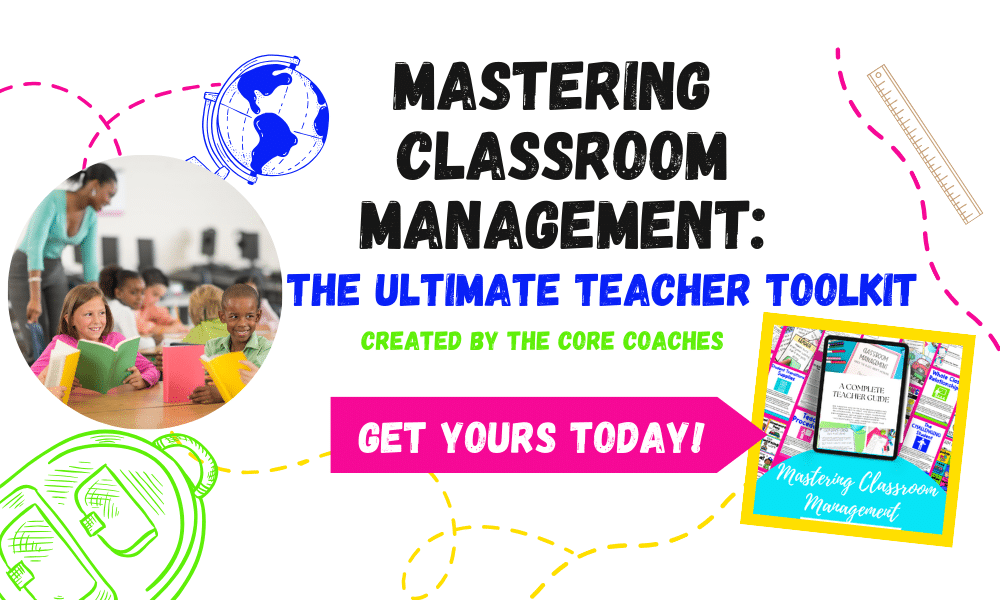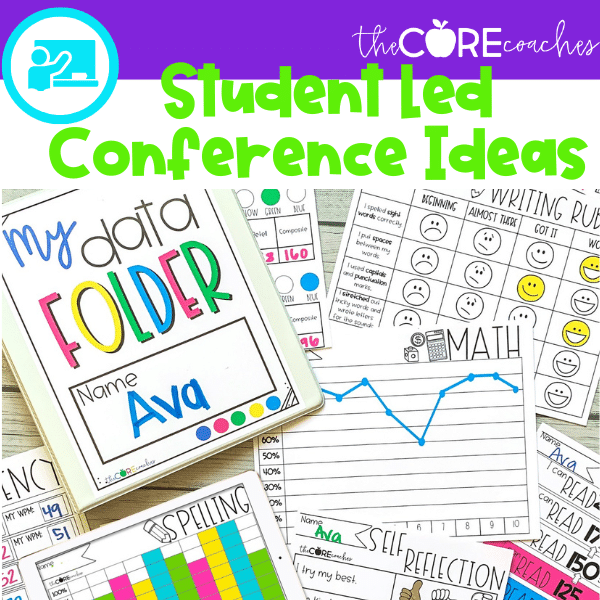Classroom Routines & Procedures Examples
What are classroom routines and procedures? The basic definition of a routine is, “a sequence of actions regularly followed; a fixed program.” The basic definition of a procedure is, “a series of actions conducted in a certain order or manner.” So whether you choose to use the term “routine” or “procedure,” a classroom routine or procedure is any set series of actions that are followed to complete a task within the classroom. For the purpose of this article, we are going to use the term routine.
Routines Student Accountability In The Classroom are essential to effective teaching. Next to building a positive classroom community, classroom routines are essential in managing a classroom. When effective management is in place, then you as the teacher can focus on the fun part – teaching!
What Types Of Routines Do You Need Though?
Here at The Core Coaches we believe that the more routines the better! If you can create a routine – do it! Why? Routines provide clear instructions & expectations. So the more routines you have in place, the more clear your students will be on what they are expected to do; moreover, how they are expected to do it.
From walking in the door, to sharpening a pencil, if you can create a step-by-step routine for it, do it! It may sound a little over the top to have a routine for pencil sharpening. However, in the end, routines help students manage their own behaviors.When you create a routine for sharpening your pencil, it’s not about the act of sharpening the pencil itself, but the behavior surrounding that process.
The Behavior Is What Routines Help To Manage.
With the pencil example, think about the steps a student needs to take to get their pencil sharpened. Do they need to walk to the pencil sharpener? Where is the pencil sharpener located? Is it in a place where the student will cause a distraction if they go while you are teaching? Is it in a place where they will want to stop and talk to their classmates? Is it in a place with other distractions? When is a good time to sharpen their pencil? During group work? The beginning of class? After recess?
The More Questions You Can Ask To Anticipate The Disruptive behavior, The Better.
When routines anticipate possible disruptive behaviors, they automatically manage the issue before it begins. Providing an explicit routine sets the student up for success & the class up for success. When students no longer need explicit instructions on how to do daily tasks, it leaves more time for explicit instruction on content.
What are some examples of routines you can create in your classroom? Below are 10 examples of classroom routines we think apply to most elementary classrooms.
Examples Of Classroom Routines For Elementary Classrooms
It may feel overwhelming to try and create a routine for EVERY Single thing. When evaluating your current routines, or a need for a new routine, we recommend beginning with routines that help manage behavior.
For example: If you are deciding between a routine for turning in homework or getting seated for reading time – begin with getting seated for reading time. Having a routine for turning in homework is great! It provides explicit expectations that help students succeed. Compared to having students move from their desks to the reading carpet though, which event is more likely to cause distractions if not managed well?
Always begin with the routine that will help manage the students’ behaviors. Managing behavior usually means eliminating distractions and disruptions. Routines that help manage behavior often deal with moving around the room: Lining up for lunch, coming in from recess, sitting down for reading, etc..Yes, even getting up to sharpen a pencil.
Sharpening Your Pencil
- Wait until the teacher is done talking
- Walk directly from your desk to the pencil sharpener
- Count your alligators while sharpening your pencil
- Do not spend more than 10 alligators at the pencil sharpener
- Walk directly from the pencil sharpener back to your desk
Students are given exact directions to sharpen their pencil. They are explicitly told when, where, and even for how long. All of these things help to manage the entire class, by eliminating distractions from one student.
In order for this routine to be effective, it must explicitly be taught. In this case, tell students why they need to wait until the teacher is done talking (they might miss directions). Have them practice walking from their desks directly to the pencil sharpener. Practice counting “1 alligator… 2 alligator…” while sharpening a pencil.
This is just one example of a possible classroom routine for an elementary classroom. Think about your own classroom and what areas routines could help students better manage their behaviors.
Keep these key points in mind as you create (or modify) routines for your classroom:
- Anticipate possible distractions that need to be avoided
- Set clear expectations so students can succeed
- Create a routine that has 5 steps or less
- Make each step as specific as possible
- Practice the routine with your students
While it takes time to initially set-up a good classroom routine, it is beneficial in the end. The more familiar students are with routines, the more they will manage their own behavior. This means you have more time to focus on actually teaching.








